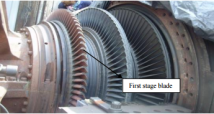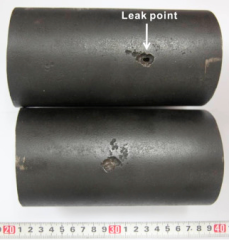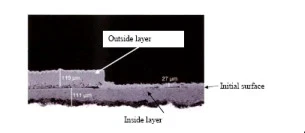 Avez-vous pensé à programmer vos formations pour 2018, le Cetim vous propose neuf formations différentes.
Avez-vous pensé à programmer vos formations pour 2018, le Cetim vous propose neuf formations différentes.
Retrouvez les programmes de chacune d’entre elles en cliquant sur leur lien.
- Analyse de défaillances : assemblages vissés et boulonnés
- Analyse de défaillances : engrenages et roulements
- Introduction à l’analyse de défaillances sur pièces et ensembles métalliques
- Analyse de défaillances : matériaux métalliques
- Pratique de l’analyse de défaillances : méthodologie, études de cas de rupture de pièces métalliques
- Conduite d’une enceinte de brouillard salin : cas des revêtements sacrificiels
- Pratique de l’analyse de défaillances en corrosion sur pièces métalliques
- Pratique de l’analyse d’avaries de pièces plastiques, élastomères et composites
- Comportement des soudures : mieux analyser les défaillances pour fiabiliser les assemblages

 An article published on the JOURNAL OF THE EGYPTIAN SOCIETY OF TRIBOLOGY (VOLUME 14, No. 2, April 2017).
An article published on the JOURNAL OF THE EGYPTIAN SOCIETY OF TRIBOLOGY (VOLUME 14, No. 2, April 2017).

 The erosion rate of convection surfaces is crucial for boiler reliability.
The erosion rate of convection surfaces is crucial for boiler reliability.  Valve had failed as a result of particles of material becoming trapped between the valve seat recess and the valve seat ball, leading to erosion of the valve seat recess, valve seat ball and the valve operating pin; this allowed hydraulic fluid to flow when the valve was nominally in the de-energised position.The material of construction of the valve seats was not compliant with engineering drawings.The investigation demonstrated the importance of maintaining the cleanliness of hydraulic systems and of the need to control the materials of manufacture in safety critical applications.
Valve had failed as a result of particles of material becoming trapped between the valve seat recess and the valve seat ball, leading to erosion of the valve seat recess, valve seat ball and the valve operating pin; this allowed hydraulic fluid to flow when the valve was nominally in the de-energised position.The material of construction of the valve seats was not compliant with engineering drawings.The investigation demonstrated the importance of maintaining the cleanliness of hydraulic systems and of the need to control the materials of manufacture in safety critical applications. Highlights
Highlights The damage of the inelastic coating was more serious than the elastic coating. The failure causes of the antistatic coating on the radome were analyzed. The results show that the failure of inelastic and elastic antistatic coatings was caused by particles erosion, and the aging of the coatings accelerated the failure of coatings. The elastic coating had better anti-erosion ability than the inelastic coating because of its high fracture elongation and good elastic deformation, so its damage was lighter than the inelastic coating.
The damage of the inelastic coating was more serious than the elastic coating. The failure causes of the antistatic coating on the radome were analyzed. The results show that the failure of inelastic and elastic antistatic coatings was caused by particles erosion, and the aging of the coatings accelerated the failure of coatings. The elastic coating had better anti-erosion ability than the inelastic coating because of its high fracture elongation and good elastic deformation, so its damage was lighter than the inelastic coating.

